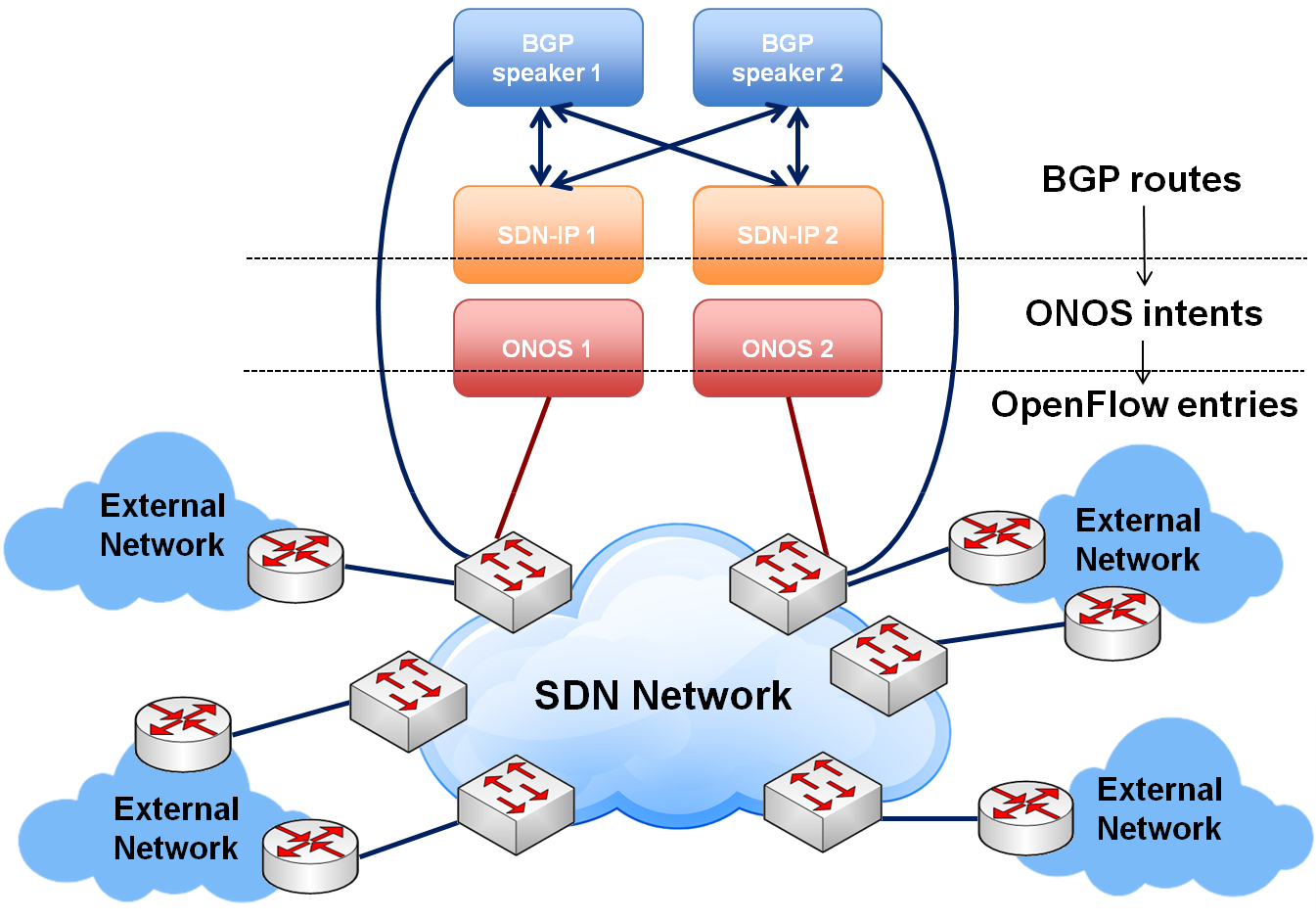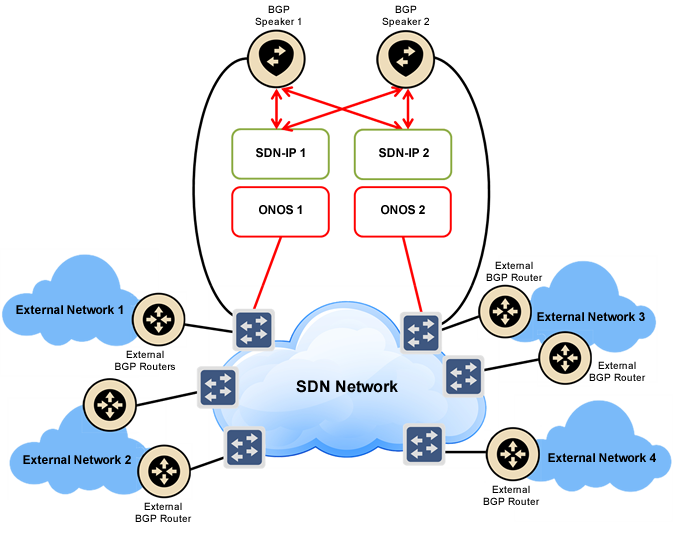Due to a ransomware attack, the wiki was reverted to a July 2022 version. . We apologize for the lack of a more recent valid backup.
...
The following figure shows the various elements in the SDN-IP network model.
- The most fundamental building block is, of course, the SDN network. This is the network that is controlled by ONOS and will use SDN-IP to communicate with the outside world.
- The network is controlled by a cluster of ONOS instances (one or more).
- SDN-IP runs as an application on a subset of ONOS instances.
- External BGP routers are connected at the edge of the SDN network. These are routers belonging to other administrative domains that will peer with the SDN network through BGP. The SDN network needs to have direct (not routed) IP connectivity to each external router it needs to peer with.
- Inside the SDN network there are one or more internal BGP speakers. There are no specific requirements on the implementation of the BGP speakers - as long as they support both external BGP (eBGP) and internal BGP (iBGP) peering sessions. For our testing and deployments we use open-source software routers such as BIRD or Quagga. The internal BGP speakers peer in two different ways:
- Each BGP speaker must have at least one connection to the SDN data plane network. The BGP speaker will peer with external BGP routers over this connection using eBGP.
- Each BGP speaker also needs to peer with each SDN-IP instance using iBGP so it can relay routes to the SDN-IP instances. The connectivity for this peering must be out-of-band of the data plane.
...

